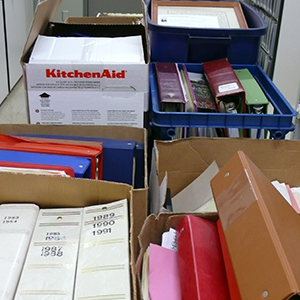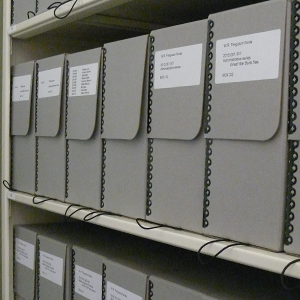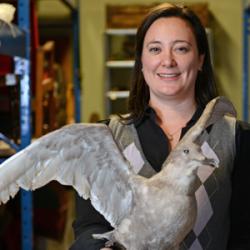It’s the common question that people ask each other at social events. What do you do? Whenever this question is posed to me, I smile, tell the unsuspecting victim that I’m an archivist, then wait I for the crickets to start chirping.
For people who do not happen to be academic historians, genealogists, or librarians, the term archivist is weird. It is a strange word that implies architecture or archery is involved. At times the occupation is even pronounced ar-“chive”-ist, prompting me segue to baked potatoes and sour cream, much to my amusement.
Last week my colleague Jane Lemke blogged about what a curator was. In an attempt to one-up her as any friendly (and competitive) colleague would do, allow me to explain what an archivist is.
An Archivist
According to the Society of American Archivists’ Glossary of Archival and Records Terminology (2016) the following is the definition of archivist:
n. ~ 1. An individual responsible for appraising, acquiring, arranging, describing, preserving, and providing access to records of enduring value, according to the principles of provenance, original order, and collective control to protect the materials’ authenticity and context. – 2. An individual with responsibility for management and oversight of an archival repository or of records of enduring value.
The Society of American Archivists provide an excellent definition of an archivist, I would say. My less complete version is: “I manage Chilliwack’s historic photos and documents for the community”.
If I haven’t lost you yet (or put you to sleep), I will share some examples of how I spend my days.

Unprocessed records waiting to be processed at the Chilliwack Museum and Archives.
Accepting archival donations
“We are only as good as what we’ve received” a former colleague used to say. The Chilliwack Museum and Archives has relied on donations since 1957, when the Chilliwack Historical Society was first begun by brothers Oliver and Casey Wells.
As a result of years of donations of personal, family, business, government, church and community records, the Chilliwack Archives collections have been curated… by Chilliwack (see what I did there Jane Lemke?).
In the Archives world, this is called passive collecting, as we have traditionally waited for community members to decide what it is they want preserved. One negative side effect of passive collecting is that there may be gaps in the collection waiting to be filled. Some communities, organizations or businesses have not yet contributed to the archives, and thus we do not hold historic information for everything that is Chilliwack…yet.
Processing archives
When records are donated, they come in milk crates, cardboard boxes and binders. My job (with the assistance of students, volunteers and part time staff) is to process the material for long term preservation and access. This means removing staples, throwing out binders, and arranging and describing records.

Processed records safely housed in archival boxes and stored in climate controlled facility at the Chilliwack Museum and Archives
Other verbs relevant to this part of archives work include: appraising, digitizing, cataloguing, accessioning, preserving, migrating, and storing. The processing of archives not only serves to preserve and stabilize the material, it also works to maintain the integrity of the records so that they can be discovered and their context understood.
The most important reason for preserving the records, however, is to maintain their authority as pieces of historical evidence.
Answering questions
Once records are preserved, they are meant to be accessed. The Chilliwack Archives collects records so that the community can use them. To this end, I provide reference services to visiting researchers – that is, I help people find what they are looking for so they can undertake research.
Additionally, I undertake research for Museum and Archives projects and assist my colleagues search for materials. I answer questions in person, by telephone and by email.
Build relationships, meet people and share stories
At the Archives I get to meet and build relationships with the entire community. Everyone has a story to tell, and I help preserve and share their Chilliwack stories. I am lucky to have this opportunity.
I provide archives advice and instruction to groups, classes and individuals; I introduce others to the Archives and holdings; and I share information about our repository online, in person, and in print.
I am a small piece of a bigger picture
I have already gone on much too long about what I do all day, but before I leave you I want to say that ultimately, I am part of a team. Without colleagues, volunteers, donors, students, interns, community members and patrons, the Archives would not be so well supported and well used, and the collections so important to Chilliwack and beyond.


Comments are closed.